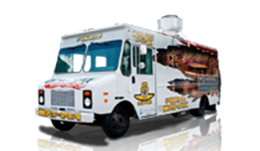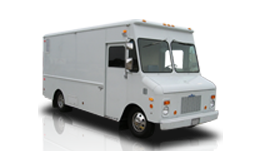How to Set Up A Solar Powered Food Truck

Being as eco-friendly as possible isn’t just for consumers, but for businesses as well. You may or may not have noticed it, but more and more restaurants have started going green in a number of ways. These include such solutions as looking for the best suppliers for locally and sustainably grown ingredients, and using biodegradable or reusable packaging for takeaway orders. So how can you do more to go green if you run a food truck?
In most cases, food trucks have a power cord that connects to utility lines, to ensure that electrical appliances used in food storage, prep, and cooking are up and running. When on the go or stationed somewhere without easy access to utility lines, however, generators are what supply that needed power. Such generators typically run on fossil fuels, but if you’re trying to be more eco-friendly, you can actually use solar power instead. Here’s what you need to know, and how you can set up your own solar-powered food truck.
What’s Inside
Energy Requirements
Not all food trucks require the same amount of energy every day; usually, this depends on the food being offered and how big the kitchen is. On average, however, food trucks will need enough energy to power refrigerators, electric ranges and fryers, blenders or food processors. If you use food warmers and a microwave, you’ll need electricity to run those, too.
All of this may seem like a lot, especially if you have more than one of each. However, newer solar-electric modules or photovoltaic (PV) systems aren’t just more durable but also more efficient. In fact, those that can be mounted on the roof of your food truck can generate enough energy to meet your electricity needs.
Running Costs
On average, you can expect to spend at least $5 a day on fuel if you’re using a generator, and at least $10 if you have a bigger generator or need to power more equipment. You also need to factor in the cost of labor and parts needed for maintaining said generator; in fact, repairing your generator or even replacing it can cost more, compared to installing solar panels.
The price of a PV system, however, will depend on several things, particularly how much energy you think you’ll need each day. Regardless of size, though, you could make back the cost of purchasing and installing said PV system in as little as nine months if your food truck runs for about 50 hours a week.
Factors to Consider
When it comes to renewable energy technologies, the progress has been remarkable in recent years. However, for food truck owners that do use solar energy, it’s still an alternate or supplemental source of energy rather than the main one. Don’t let that discourage you, though; after all, it’s still better than relying wholly on fossil fuels. At the very least, you have a back-up source of energy if there’s a power outage and you’re dealing with a big group of customers.
If you want to use solar power as your main energy source, though, there are several things to consider. The first, of course, is your menu. Some food trucks, such as sandwich or pizza trucks, will call for less energy in both storing and preparing the food; conversely, others such as coffee trucks, will call for more energy.
Keeping your menu in mind will help you with the next factor, which is determining how much electricity your food truck will require. You don’t need to know the exact number, but knowing how much of your equipment runs on electricity and approximately how much power each one uses in an hour is a good place to start. Multiply each of those by the number of hours you plan to run your food truck each day, and you’ll have a better idea of your projected energy consumption.
Once you know your energy requirements, you’ll know how big your food truck’s solar power system will need to be to meet those energy needs. Don’t forget to take your area’s climate into account, since you may need more solar panels to harvest more energy to make up the difference on days when there isn’t as much sunlight.
Ultimately, it’s the size of your PV system that will have some effect on the cost of installation. Whether you’re still having the food truck outfitted with other equipment – in other words, it’s still being built – or you’re having the PV system added as an afterthought, you may find yourself paying up to $10,000 more, or 10% of the total cost for both vehicle and equipment installation.
In the end, having a PV system installed means you have more than one way to power your equipment, and even if you don’t use solar power for just half a workday, you’re likely to see a reduction in your running costs.
All told, however, it’s still a good idea to have a generator for your food truck, as well as an easy way to get hooked up to an external power source. After all, any investment in your business won’t be a waste of money since you’ll eventually make back what you spent, whether it’s on cooking equipment or a solar power system. And even if your food truck is only partially solar powered, that’s still a step toward being fully dependent on renewable energy.






